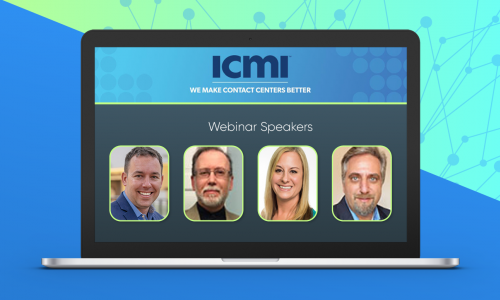The state of healthcare in the United States has been in the spotlight for years, only ramping up in public scrutiny in the past months. Changes to the healthcare landscape and the influx of new members brought about by the much anticipated Affordable Care Act (ACA) are putting increased pressure on the industry to update and innovate their marketing and service approaches.
The roll-out of the new system has encountered its fair share of hiccups, especially with the problematic launch of the Federal marketplace, HealthCare.gov, as well as various healthcare institutions saying they are ending policies that don’t meet the law’s standards or weren’t grandfathered. However, the implementation phase has picked up speed, shifting some of the spotlight from the state and federal exchanges to individual insurers, which, as a result of the ACA, are seeing an unprecedented influx of new members.
While teething problems are to be expected, especially when dealing with such a vast change, a number of payers and providers are struggling to deliver the level of service they want to be known for and that their members and patients expect. One glaring problem is a lack of information about newly enrolled members, and this lack of accurate data means that many times payers have to take a leap of faith when determining whether a member is, in fact, enrolled.
Another challenge has revolved around funding, which in some cases has been limited. Much needed education campaigns to inform the newly insured about the new processes as well as outreach projects to recruit new members are two of the schemes impacted by this lack of funds.
Despite the evident challenges, the ACA creates enormous opportunities for the healthcare industry, especially since it has attracted the largest influx of new members entering the market in several decades. Here are five opportunities that need to be leveraged:
1. Manage the influx of calls: Navigating the healthcare landscape is complicated at best. The first-time insured are especially likely to need help understanding their eligibility and gaining familiarity with their benefits. Moreover, because of the complex issues and sensitivity of healthcare, members are more likely to want to speak with another person.
This means that insurance providers need to be prepared for an influx in calls and equip their contact centers to cater for this growth while still delivering a good experience. There are two approaches—either ramp up their internal contact centers or team up with a partner that can help with staffing the contact center and providing the necessary training for associates. Since traffic is expected to fluctuate, it’s good to have a scalable system, both in the member service centers and in supporting technology. While contact centers are expected to be the main mode of contact, insurers should not forget other touchpoints, and their communication strategies should include multi-touchpoint interactions, including engaging through smartphones via apps or text capabilities.
2. Leverage member insights: Healthcare is a sensitive topic, with members and patients expecting that their information is respected and kept private. However, non-medical information can help insurance providers understand where they need to make improvements, including with their informational campaigns to better educate members. This is especially important during the rollout of the ACA, which has led to an influx of new members who need help understanding the new healthcare landscape. Therefore, insurance providers and the exchanges need to understand what is working well and what needs to be improved by leveraging data from different touchpoints. For example, if numerous members are calling the same insurer with the same question, there might be an opportunity for an outreach campaign to inform members about that specific topic.
Further, frontliners need to be recognized as great sources of information since they are constantly in touch with members and can identify trends in member pain points. Their additional exposure to member insights means that associates can often be instrumental in identifying the reasons behind customer issues and help find a speedy solution.
3. Embark on a targeted messaging campaign: Equipping members with the correct information can be instrumental in ensuring that they have access to the right treatment as well as the means to take preventative action to avoid future health problems. This is a win for both insurance providers and members themselves. Therefore, insurers need to leverage member data to create a very targeted and personalized outreach program, with information that resonates with individual members. TTEC’s Customer Growth Services worked with a health insurance provider to send hyper-targeted communications to employees, who were also members. After collecting data from 16 disparate repositories and analyzing it, the insurer was able to identify individual concerns. For example, a member suffering from high blood pressure which increases his risk of cardiovascular disease could be sent tips on lifestyle changes that could help address his hypertension problem.
4. Create a member acquisition strategy: A substantial number of new members are chronically ill. Resources-strapped providers are struggling to find time to reach out to other potential members, which would help them gain a more balanced member base. Not enough healthy members are signing up. In fact, a recent New York Times article noted that public hospitals are working to attract a new class of patients than their historical member base—higher-income, more educated, and more stable members. In order to do this, providers need to embark on an outreach strategy that acknowledges, and leverages, prospective members’ different needs. It’s imperative to use social media and digital marketing as integral parts of the campaign.
5. Design an integrated multichannel and multi-model marketing approach: The most successful state health insurance exchanges have been leveraging multiple channels with varying approaches including traditional media, email, text, and social media. Connecticut, which has been one of the success stories, opened up physical enrollment centers, allowing new members to have face-to-face interactions. Further, Connecticut leveraged multiple channels for its community outreach, including television and radio, social media, text messages, and billboard ads. This strategy allowed the state to reach a larger portion of its target population using the channel that was most effective to them. An integrated multichannel approach is critical since different customer segments use various channels both to interact with brands and to gain information, which has been a critical part of the ACA rollout.
Finally, just as Rome wasn’t built in one day, neither will a transformation in healthcare. Healthcare reform is a journey and we need to look at it from the eyes of members and determine what needs to be addressed in the long term. This not only includes improvements to current systems, but also the understanding of which new products need to be created. As the journey continues, plans will become better positioned to support members in a way that’s relevant to them and is also successful for the company.
Five Opportunities to Improve Healthcare Service


March 12, 2014
by Pat McCaffrey,
Senior Vice President, Healthcare and Government Solutions
Digital Transformation Consulting, Omnichannel Platform, Contact Center Operations, Customer Acquisition
Senior Vice President, Healthcare and Government Solutions
Digital Transformation Consulting, Omnichannel Platform, Contact Center Operations, Customer Acquisition





